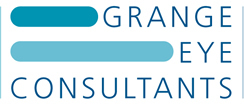How does presbyopic LASIK eye surgery work?
Presbyopic LASIK eye surgery works by altering the focusing power of the eye. It alters the focusing power of the eye by reshaping the cornea of the eye. The cornea being the part of the eye that we put a contact lens on. And it’s very clever how it works, what one does is correct the dominant eye for distance and the non-dominant eye for near.
Yet with certain types of lasers, such as LASIK blended vision or PRESBYOND, one also corrects the dominant for distance and intermediate and the near eye for near and intermediate. And the big advantage of that is there’s no blank area in the middle. Because if you simply correct one eye for distance and one eye for near, intermediate vision will have a – sort of – blank area. And if you correct one eye distance and one eye for intermediate, then near vision will have a blank area.
How PRESBYOND works.
With PRESBYOND the reshaping of the cornea works in such a way that it not only corrects short-sighted or presbyopia or long-sighted element of your eye, but it also reshapes the cornea to give you a depth of vision. Not quite like a pinhole on a camera, but the analogy is a pinhole on a camera. If you use a pinhole camera you get depth of vision. And with LASIK blended vision and PRESBYOND you get depth of vision in the treatment.
So, at the end of surgery if you close one eye you’ll be aware it’s your reading eye and if you close the eye it’s your distance eye, but with both eyes together once you’ve adapted you’re not aware which eye is doing which.
Give your eye time to adapt.
The rate at which people adopt is variable, but 85% of patients by three months have adapted. But it’s important that patients remember that initially, the reading vision is relatively better than the distance vision because there’s an expectation with all eye operations, particularly laser eye surgery, that the results are instant.
But with presbyopic LASIK surgery and particularly LASIK blended vision, there is an adaptation process. So, if you think about it, it took you a long time to need those reading glasses, so it will also take a few weeks for you to adapt to not needing them and adapt to the new vision that we’re giving. Because what we’re giving you is not something you’ve ever had before, so it takes a little bit of time.
If you’ve worn varifocal glasses, it took time to adapt to them, if you started needing reading glasses it took time to get used to taking them on and off and adapting to that and people mostly never get used to that. So, it takes time after presbyopic LASIK treatments and laser blended vision, PRESBYOND, for you to get the full benefit.
About the Author

Mr Robert Morris
BSc(Hons), MB BS (Hons), MRCP, FRCS, FRCOphth
Consultant Ophthalmic Surgeon
Robert Morris trained at St Bartholomew’s Hospital part of the University of London. He graduated with Honours in his final examinations. Robert completed his post-graduate ophthalmic training at the renowned units in Oxford Eye Hospital and London’s Moorfields Eye Hospital. Within the NHS, he has had a high volume cataract surgery practice and performed over 12,000 cataract procedures. He has an interest in squint surgery and is a national expert in this field. In addition to his NHS work, Robert manages a successful independent private practice. He continualy updates his training to keep abreast with the latest technology and techniques in refractive surgery.
